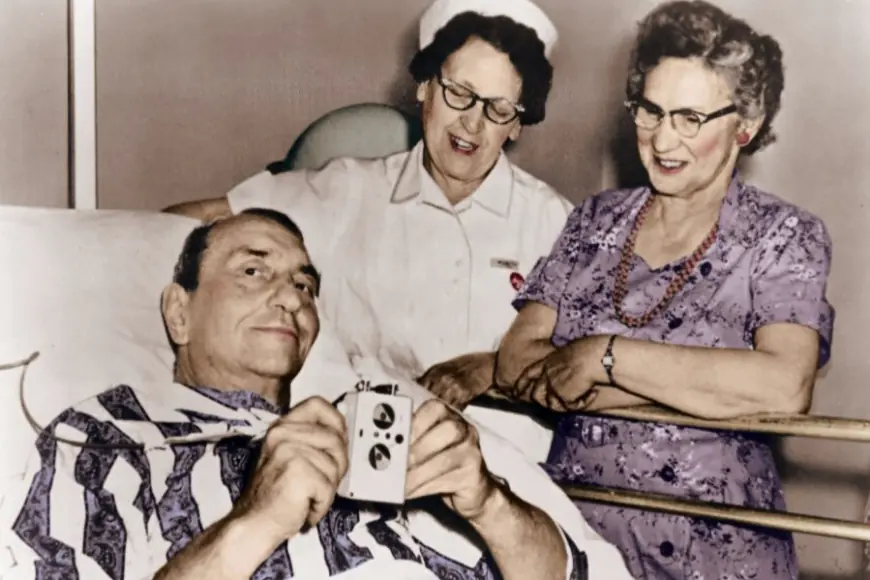Halloween 1957: How a widespread blackout put Medtronic on the map with the invention of the portable pacemaker
The outage rendered life-saving pacemakers useless, and triggered innovation.

Sixty-seven years ago on Halloween, a rolling power outage wreaked havoc across the Twin Cities and at the University of Minnesota hospital, where cardiac patients were relying on electrical pacemakers.
Pacemakers send electrical pulses to regulate a person’s heart rate and, in 1957, these electrical innovations needed to be plugged into an electrical socket to function, making the devices and the patients relying on them extremely vulnerable during power outages.
The Halloween 1957 power outage, caused by an explosion at the Black Dog power plant just south of Minneapolis, lasted for three hours and took the life of a young patient who was on an AC-powered pacemaker, said Dr. Robert Kowal, vice president of Medtronic’s cardiac pacing therapies.
The blackout was front page news even before the child’s death was known.

“Thursday’s power failure was undoubtedly the most colossal Halloween prank of the century in the Twin Cities area,” read a line from the Nov. 1, 1957 edition of The Oliver Towne column in The St. Paul Dispatch. “I got that eerie feeling something had happened to the city as I drove down W. Seventh.”
The explosion at the Northern States Power plant, now known as Xcel Energy, was exacerbated when “four separate circumstances combined at the right moment to leave a wide area without electric power,” according to a company publication dated November 1957.
“Business and home activities in the metropolitan centers of Minneapolis and St. Paul, their suburbs, and in numerous other communities throughout the interconnected system came to a halt,” the company said.
Elevators stopped working between floors, stop lights stopped working at intersections and life-saving pacemakers were rendered useless.
The pediatric patient’s surgeon, the now-famed Dr. C. Walton Lillehei, turned to Medtronic founder Earl Bakken for help, to make sure he wouldn’t find himself in this situation again.
Bakken, who was working out of his garage at the time to repair medical devices, was tasked with creating a battery-powered pacemaker that wouldn’t succumb to the same fate as the others.

At the time, pacemakers were “crude devices,” with wires coming out of the person’s body and “they were susceptible like anything that uses wall power,” said Kowal, who is also a trained cardiac electrophysiologist.
Bakken, who had an electrical engineering degree from the University of Minnesota, was intrigued by the story of Frankenstein, Kowal said, and believed in “the ability of electricity to heal.”
While reading a Popular Electronics magazine article, Bakken was inspired by metronome circuits and went on to create the first external, battery-powered pacemaker.
Warren Mauston, a heart patient at St. Paul’s Bethesda Hospital, would become the first U.S. patient to be fitted with an external pacemaker in 1959.
Roughly the size of a small paperback book, the external pacemaker was also Medtronic’s first product.
Innovation continues
Shortly after Bakken’s invention, the first implantable pacemaker was developed and soon implanted in a human patient in 1960.
Bakken and Medtronic co-founder Palmer J. Hermundslie secured a licensing agreement with the inventors of the implantable device, giving Medtronic the exclusive U.S. manufacturing rights to the device, according to the company.

The first implantable device “was probably the size of a hockey puck,” minimally programmable and had a lifespan of about two and a half years, Kowal said.
Following the introduction of the implantable device, Kowal said innovation boomed with a new version of the device hitting the market every three to seven years.
The pacemakers of today, Kowal said, are about the size of an Oreo cookie with a nearly 17-year lifespan and can be programmed hundreds of different ways.
Micra, the world’s smallest pacemaker, was also recently developed by Medtronic, and is roughly the size of a multivitamin.
“Because the technology has gotten so much better over the years, the threshold to use (a pacemaker) has gone down,” Kowal said, with approximately 600,000 pacemakers implanted yearly in the U.S. and one million worldwide.
The first external pacemaker that Bakken created in his Minneapolis garage nearly 70 years ago, “launched a field of medical technology,” Kowal said.
What's Your Reaction?









































































































